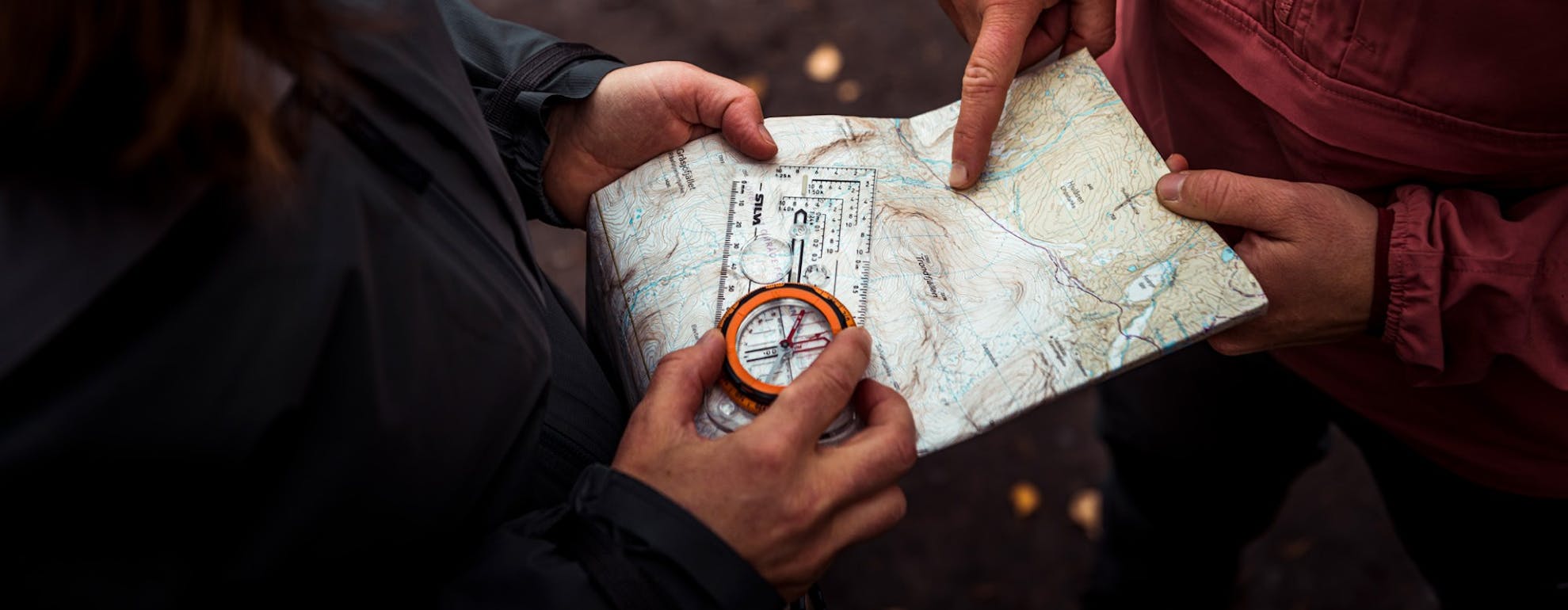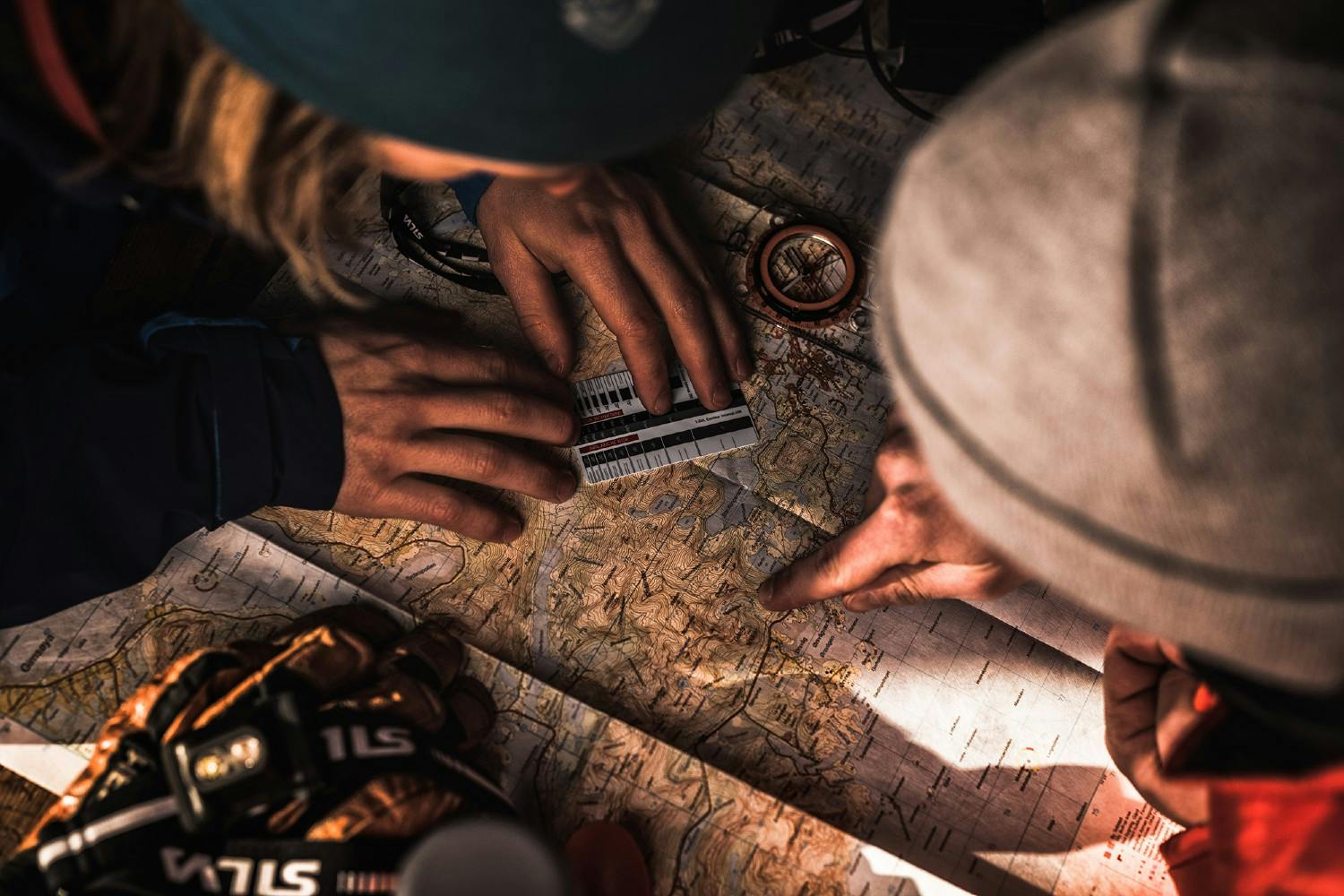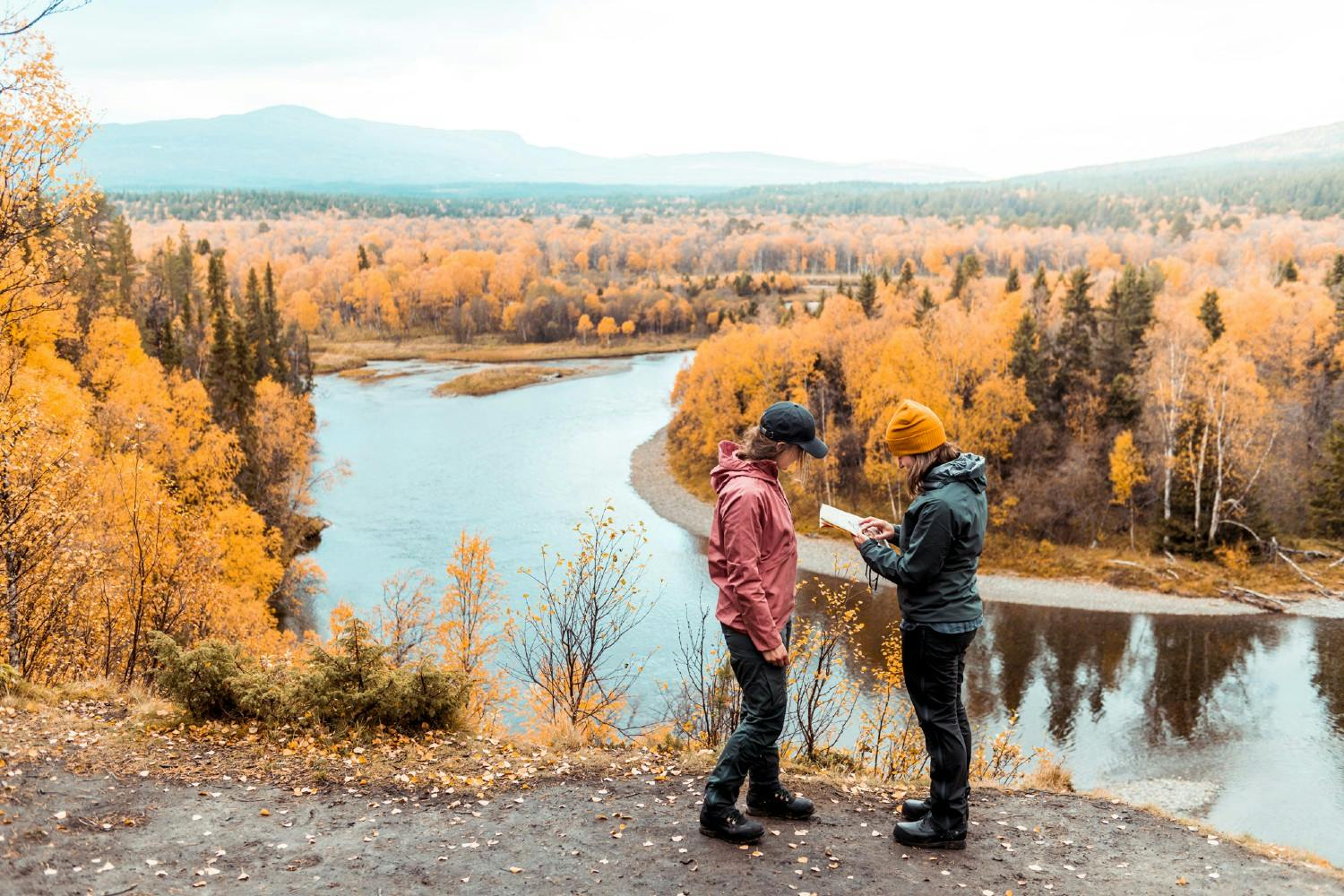
A Beginners Guide to Hiking & Trail Running Navigation
Being able to navigate is an important skill for a walker or trail runner. Not only will you be less likely to get lost and therefore safer, you will also have the confidence to explore new places and plan more interesting routes. Navigation isn’t a complex skill, so here are a few tips from Dave Taylor AKA. Fell Running Guide, to help get you started.
ㅤ
1. LEARN BASIC MAP READING
You don’t need to memorise every map symbol, just understand the basics such as roads, rivers, forests, buildings, walls and paths. The blue lines (grid lines) that criss-cross the map are one kilometre apart and run north to south and west to east. Maps are always drawn with north at the top.
Contour lines give an indication of how steep the ground is. Lots of lines close together means steep, whereas if the contours are widely spaced the ground is gently sloping or flat. Knowing this will help you identify features such as hills and valleys and will also let you plan routes that avoid steep hills – or include them if that is your preference!
Because maps are metric, i.e. the grid squares are every kilometre it makes sense to set any GPS device to measure kilometres rather than miles. If your watch tells you that you’ve done 5km that’s the equivalent of 5 grid squares on the map.
Rather than take a full map with you just photocopy or print the relevant section that you will need. Walk or run with your map in your hand or somewhere easily accessible and look at it often to confirm your position, that way you’re far less likely to go wrong than if you put the map away and don’t look at it!
ㅤ

Image courtesy of Silva
ㅤ
2. DON’T BE SCARED OF THE COMPASS!
A compass is a very simple piece of kit. Basically, the red needle always points to north (unless affected by something magnetic). Simply knowing this can prevent you from going the wrong way! Look at your map and work out what direction you want to travel then look at the compass to see which way that is in the landscape.
At Sportsshoes, we recommend the Silva Arc Jet 360 - the perfect choice if you are looking for a high-performance thumb compass with a rotatable housing. With this feature, you can use the Silva 1-2-3 system for easy navigation. This compass has all the high-end qualities that you need for fast navigation while running and comes in right and left versions depending on your preference.
ㅤ
3. PLAN SHORT SECTIONS
Rather than think of your route as one long journey, break it down into smaller legs. This will make it easier to follow on the map and you are less likely to go wrong. eg: Leg 1 northwest from the car park, uphill through the woods for 800 metres, continue uphill for 500 metres to path junction.
Leg 2 at path junction take the path heading north for 1500 metres to bridge etc.
ㅤ
4. LOOK AT THE LANDSCAPE
Before you set off, look around and familiarise yourself with the landscape. Look at the major features (e.g. hills, rivers, forests, villages, TV masts etc) and identify them on the map and see where they are in relation to your current position. This will help you work out where you are later as you approach or pass them.
ㅤ
5. PAY ATTENTION!
As you pass significant features, make a mental note to “tick them off”. For example have you been going uphill or downhill, did you cross a river or stream, have you passed any obvious path junctions etc. In woods or forests it is easy to become disorientated so keep a close eye on the compass to check which direction you are going in. Look at the map for something that will tell you that you’ve gone wrong or overshot your destination. For example, if you know that the point you are heading for is before you get to a river, then if you come to the river you’ve gone too far!
ㅤ

Image courtesy of Silva
ㅤ
6. KNOW YOUR PACE
Knowing how quickly you are walking or running is really useful for helping you both navigate and plan a route. For example, if you know that your average running pace on gently sloping ground is 6 minutes per kilometre then you can work out how far you have gone if you have been running for 20 minutes. GPS watches or phone apps can be very useful as they can tell you precisely how far you have travelled but knowing this yourself without relying on the watch is a good skill to acquire. Combine this knowledge with understanding the map and you will be able to plan how far you can travel in a given time – really important if you don’t want to be hours late or still out after it has gone dark!
ㅤ
7. FOLLOW THE BASIC DS
Always check these basic principles:
Direction – what direction should I be heading?
Distance – how far away is the place that I am heading for?
Details – what will my journey involve? e.g. uphill or downhill, road or path, any major features such as crossing a river, through a forest etc.
Duration – how long should it take me to get there?
ㅤ
8. PRACTISE MAKES PERFECT
Navigating is a skill and getting good takes practise so don’t be afraid to get out and challenge yourself. Choose an area where the consequences of not knowing exactly where you are aren’t too serious! Make sure there are enough features to help you relocate, for example knowing there is a stream to your west that you could follow to the road. There is nothing wrong with making some navigation mistakes in a safe environment and learning from them.
ㅤ
9. NAVIGATING ISN’T A DARK ART!
Navigation can be fun to learn and gives you the skills to be self-reliant and independent and allow you to safely visit more remote and interesting places.
ㅤ
Dave Taylor is an experienced fell and mountain runner and a UK Athletics fell running coach. As Fell Running Guide, he offers navigation training and run coaching for trail and fell runners. Click here to find out more.
Want to learn more? Visit our Health and Wellbeing category to help look after your body, mind and personal safety with our expert advice and guidance.
Welcome
Welcome to our SportsShoes Health & Wellbeing Hub! Look after your body, mind and personal safety with our expert advice and guidance.
Read More
Share this
Featured Articles
View All